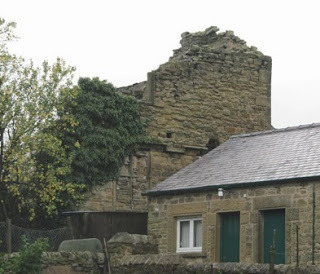Guided walk - Eyam - Derbyshire
http://www.aboutnottinghamshire.co.uk/
The National Trust runs many really interesting events, often volunteer-led. Yesterday I went on a walk round the isolated village of Eyam, concentrating how water had influenced its development.

 We started by looking at the Grade II listed ruin of Bradshaw Hall. Colonel Francis Bradshaw was the squire of the village and in 1588 developed a complicated series of lead pipes that led water down from the hills into a series of impressive stone troughs in the village. As the water came out of the spout so villagers could collect it, knowing it was safe from contamination, whilst horses and cattle could use the series of troughs - in fact a quite brilliant idea. It is thought that this was the first public water supply in the country.
We started by looking at the Grade II listed ruin of Bradshaw Hall. Colonel Francis Bradshaw was the squire of the village and in 1588 developed a complicated series of lead pipes that led water down from the hills into a series of impressive stone troughs in the village. As the water came out of the spout so villagers could collect it, knowing it was safe from contamination, whilst horses and cattle could use the series of troughs - in fact a quite brilliant idea. It is thought that this was the first public water supply in the country.We visited several of these troughs dotted throughout the village, which must have made everyone life so much easier, and safer.
Those at the far end of the village had a different water supply, and the water was much softer, ideal for washing clothes, which were then spread out on the village

green to dry.
Incredibly a complex series of pipes fed water into mills that spun silk and cotton, housed in tiny little cottages.
We also visited the site of the lead mine in the town. This whole area, bordering on the division between grit stone and limestone is rich in lead ore and fluorspa.
Afterwards I took the opportunity to visit the interesting church and see the new stained glass window that tells the whole story of the plague that devastated the village in 1665. For more about this most interesting place just see previous blog


Published on October 26, 2013 01:39
No comments have been added yet.



